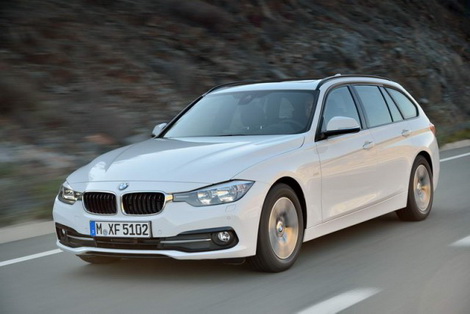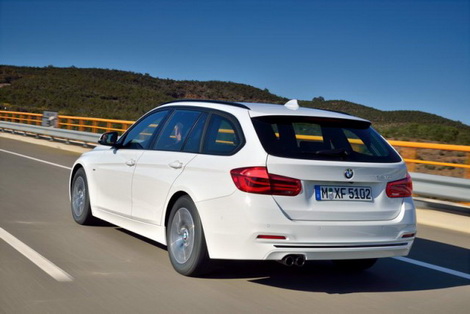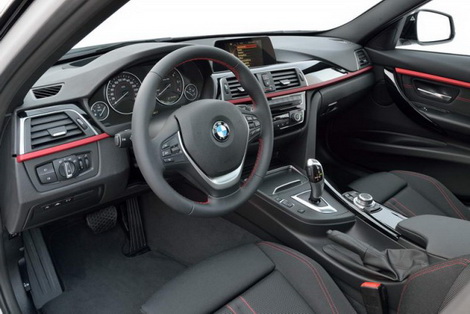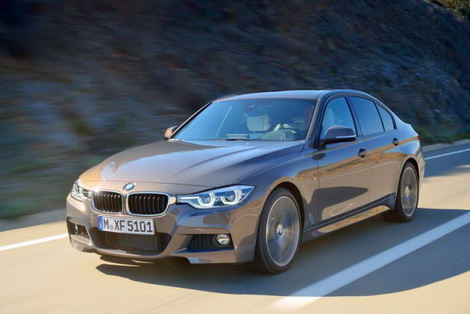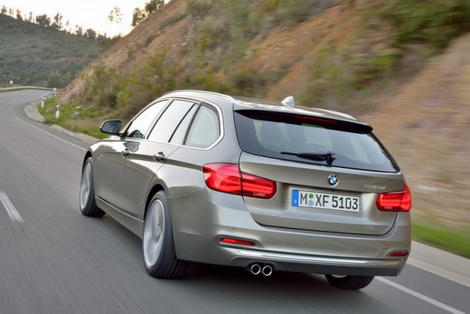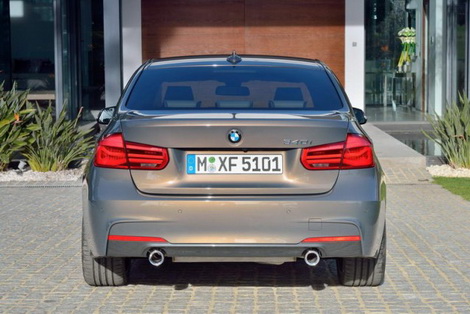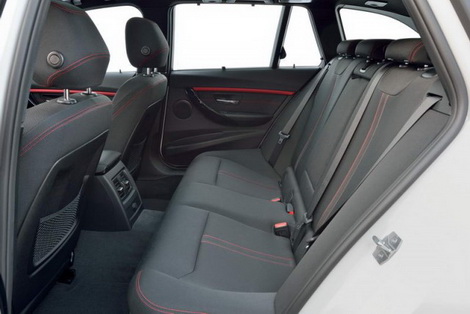The BMW 3 Series is 40 years old this month and the Munich car maker has timed the introduction of a facelifted model to coincide with celebrations.
At first glance, the LCI (Life Cycle Impulse - facelift to you and I) appears little changed, but BMW has been hard at work under the skin of the 3 Series and there are some very significant updates.
Exterior
This is the least interesting aspect of the updates to the 3 Series. The front bumper has been redesigned, the exhaust outlets are different across the range, there's a new range of alloy wheel styles and some new paint colours from which to choose. The biggest changes are to the lights. At the back there are new all-LED units with a distinctive 'signature' at night, while up front there are also new LED daytime running lights and redesigned headlight internals for a wider appearance. Full-LED headlights are optional for the first time, as is BMW Selective Beam, which maintains high beam without dazzling drivers of other vehicles.
The BMW M3 Saloon gains the new lights and a few new colour options.
Interior
Only detail changes have been made to the cabin of the 3 Series. There's more high-gloss black and chrome accenting than before, a sliding cover for the cupholders, additional storage and an extended accent strip in the Luxury, Sport and M Sport versions.
Irish specifications have yet to be confirmed, but over in the UK the decision has been made to fit satnav as standard to all versions of the 3 Series.
Mechanicals
Here's where buyers should sit up and take notice. Virtually every engine in the 3 Series arsenal is updated or all-new. Highlights include the introduction of the first ever three-cylinder engine in a BMW 3 Series, badged 318i. It is powered by the same 1.5-litre unit found in the MINI Cooper, producing 136hp and 220Nm of torque. It does 0-100km/h in 8.9 seconds (9.1 with the automatic gearbox) and 211km/h flat-out. Impressively, it also returns 52.3mpg (5.4 litres/100km) and emits just 124g/km - or 54.3mpg and 122g/km with the auto. Low mileage drivers would do well to consider it ahead of the diesels.
Speaking of which, there are six different diesel badges to choose from, including the 316d and 318d with 116- and 150hp respectively, (maximum torque figures are 270- and 320Nm). The former's emissions have dropped to 109g/km, meaning a lower tax and VRT band than before, while the latter has more power to go along with its reduced emissions and fuel consumption. BMW has put a lot of effort into the updated 320d too. It's more powerful - at 190hp - yet has lower emissions (111g/km) than before as well.
The ultimate efficiency champ in the line-up is the new 320d EfficientDynamics Plus model, available in saloon and Touring estate guises. These use a 163hp/400Nm version of the 2.0-litre four-cylinder turbodiesel engine, but thanks to changes to the transmission and aerodynamics they can achieve an emissions rating of as low as 99g/km (with the auto) and fuel economy of either 72.4- or 74.3mpg depending on the transmission fitted (3.9- to 3.8 litres/100km). Despite this parsimony, the 320d EfficientDynamics can do 0-100km/h in as little as 7.8 seconds and tops out at as much as 230km/h.
At the other end of the performance scale in the diesel range is the new six-cylinder 335d, offered as standard with xDrive four-wheel drive. This is now the only model in the line-up featuring two turbochargers, resulting in maximum power of 313hp and an incredible 630Nm of torque. Unsurprisingly, it's quick, with a 250km/h electronic limiter and 0-100km/h in 4.8 seconds. BMW still reckons it'll return 51.4mpg (5.5 litres/100km) and it emits 145g/km.
Back on the petrol side of things, the 328i has been replaced by the 330i, which is powered by a new version of the turbocharged 2.0-litre four-cylinder engine. Maximum outputs are 252hp and 350Nm, resulting in 0-100km/h in 5.9 seconds (5.8 with the auto). Above that sits the new 340i, the only six-cylinder petrol model in the range (twin-turbocharged M3 aside). It's powered by an all-new 3.0-litre turbocharged engine, producing 326hp and 450Nm of torque. It comes as standard with an eight-speed automatic gearbox and dispatches 0-100km/h in a scant 5.1 seconds.
BMW has also updated the chassis of the 3 Series, apparently making it a little more firm as standard, while both the six-speed manual and eight-speed automatic transmissions have been overhauled. The latter is said to reduce emissions of CO2 by three per cent over its predecessor, while the former now comes with 'engagement speed control', which automatically brings the engine speed to the right level when changing down or up a gear.
Anything else?
BMW plans to extend the 3 Series line-up even further in 2016, with the introduction of the range's first ever plug-in hybrid model. Badged 330e, it will be powered by a combination of a turbocharged 2.0-litre petrol engine with 184hp and an 80kW (109hp) electric motor. The maximum combined outputs of 252hp and 420Nm give 0-100km/h in 6.3 seconds and a top speed of 225km/h. Yet, thanks in part to an electric-only range of some 35 kilometres, the combined cycle fuel-economy figure is quoted as 134mpg (2.1 litres/100km) and emissions are just 49g/km.
Pricing
The updated 3 Series starts from €37,140 for the 318i SE saloon (€42,260 for the diesel-engined) rising to €65,370 for the touring 335d xDrive M Sport. The cheapest diesel option is the 316d SE saloon at €39,990 or €42,340 for the touring version. The 320d starts at €43,890, the 330i at €51,330 and 340i at €64,550. All prices OTR.
Watch out for our review of the 2016 BMW 3 Series in early July on the Car Reviews page.


